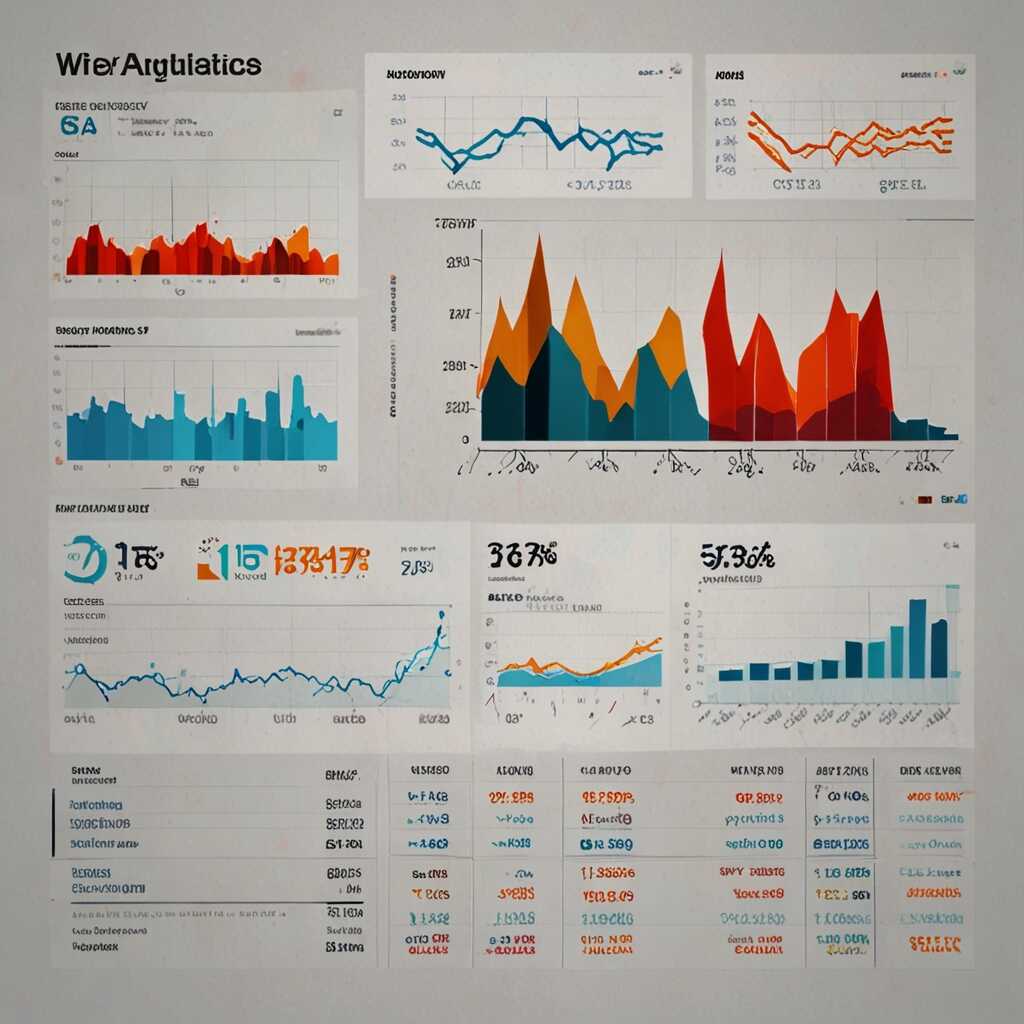Using 304 Not Modified status codes can significantly enhance website performance by improving load times and resource efficiency. This status code helps browsers understand that the cached version of a resource is still valid, reducing unnecessary data transfers. At Metrics Rule, we emphasize the importance of effective caching strategies in technical SEO to boost site speed and optimize user experiences. Adopting 304 Not Modified status codes not only streamlines server responses but also aids in creating a more responsive website that satisfies both users and search engines.
Exploring the Role of 304 Not Modified Status Codes
304 Not Modified status codes are essential for enhancing website performance by reducing loading times. When a browser requests a resource, the server checks if it has changed since the last request. If not, it responds with a 304 code, indicating that the cached version is still valid. This process efficiently saves bandwidth and speeds up loading, thus improving the overall user experience on websites. It is particularly useful in e-commerce scenarios where site speed is crucial for engaging customers. Understanding the implementation of 304 Not Modified codes helps web developers optimize caching strategies, making websites load faster and remain competitive in search results.
Implementing Caching Strategies with 304 Not Modified
Caching strategies utilizing 304 Not Modified status codes can significantly improve site speed and reliability. When a user revisits a page, the browser fetches the cached version instead of downloading the entire resource again. This technique enables quicker response times and less data transfer, making it invaluable for high-traffic websites. Web developers should configure their servers and utilize the “Last-Modified” header in their HTTP responses to take full advantage of this feature. By analyzing server logs, one can review how often 304 codes are issued, helping optimize caching decisions further to enhance web performance.
Importance of Caching for Faster Web Performance
Caching plays a critical role in improving website loading speed. Properly implemented, caching enables the delivery of stored web resources, significantly reducing load times for repeat visitors. The 304 Not Modified status code is essential for caching because it allows browsers to check if they have the latest version of a resource without downloading it again. This helps reduce bandwidth use and enhances the user experience by loading pages faster. By utilizing efficient caching strategies, such as browser caching, web developers can see noticeable improvements. Studies show that effective caching can lead to load time reductions of up to 2 seconds or more, especially for e-commerce websites that rely on quick response times.
Effective Caching Techniques for Improved Performance
To enhance website performance using caching, several techniques can be implemented successfully. Using the 304 Not Modified status code helps browsers validate cached resources, ensuring they only retrieve updated versions when necessary. This technique allows greater efficiency and reliability for users, creating a smooth experience. Additionally, employing server-side caching systems, like Varnish or Redis, can drastically reduce response times by storing frequently accessed pages and assets. When combined with content delivery networks (CDNs), website owners can further enhance load speed across various geographical locations. By testing these strategies, web developers can discover which methods provide the best results for their specific site needs while significantly reducing server load.

Configuring HTTP Headers for Optimal Caching Results
To leverage 304 Not Modified responses effectively, essential HTTP headers include ETag, Last-Modified, Cache-Control, and If-None-Match. The ETag header uniquely identifies a resource version, while Last-Modified specifies when the resource was last changed. Cache-Control enhances caching efficiency by directing browsers on how long to store downloaded resources. Properly configuring these HTTP headers offers significant benefits; it improves site performance by minimizing unnecessary data transfers, ensuring faster loading times, and reducing server load. Research shows that websites using 304 Not Modified status codes can see performance improvements of up to 50% in specific cases, enhancing the overall user experience.
Understanding the Roles of Critical HTTP Headers
HTTP headers such as ETag and Cache-Control are crucial for ensuring optimal website performance. An ETag provides a reliable way for browsers to check if the stored resource is still valid without re-downloading it. Meanwhile, Cache-Control includes directives like ‘public’, ‘private’, and ‘max-age’ to help control how caching works, enabling optimal performance and user experience. Utilizing these headers efficiently not only enhances site speed but also boosts SEO performance. Digital marketers and web developers should prioritize testing these configurations periodically to evaluate their efficiency in real-world scenarios. By doing this, they can ensure that their site retains excellent performance as web standards evolve.
Numerical Insights Related to HTTP Interaction
- Over 60% of browsers use caching strategies to enhance loading speed.
- Websites can reduce loading times by up to 50% by using 304 status codes effectively.
- Approximately 80% of a page’s loading time comes from assets, like images and scripts.
- Over 30% of users leave a site if it doesn’t load in 3 seconds.
- Using 304 status codes can improve the efficiency of data usage by up to 20%.
- Studies show that faster websites can lead to a 16% increase in user retention.
- Effective caching can increase page load speeds by 2-3 times on average.

Identifying Common Misconfigurations That Impact Performance
Many website owners and developers face misconfigurations when implementing 304 Not Modified status codes. Common pitfalls include incorrect caching headers, which may prevent users from benefiting from these codes effectively. If caching headers are not configured correctly, browsers may ignore them, leading to unnecessary data transfers, which negatively impacts loading times. Moreover, a server might not respond with a 304 status code due to errors in the server’s configuration settings. Identifying these issues through thorough review and testing is essential for improving website performance and enhancing user experience.
Understanding Caching Headers and Their Importance
Caching headers play a crucial role in the correct implementation of 304 Not Modified status codes. These headers, such as “Last-Modified” and “ETag,” instruct browsers whether to fetch resources again or load them from the cache. When caching headers are well-configured, they optimize bandwidth and improve site speed, making it easier for search engines to crawl and index the site effectively. By ensuring that caching headers are correctly implemented, web developers can help enhance site performance and drive better results in their SEO efforts. Proper configuration allows the website to serve content quickly, ensuring an excellent user experience while aligning with best practices for SEO.
Utilizing Analytics to Measure Cache and Traffic Performance
To measure the impact of 304 responses on website performance, various analytics tools can be employed. Popular options include Google Analytics and server log analyzers. These tools help you track metrics such as page load times and user engagement rates. They offer insights into how caching strategies affect different user devices and web browsers. Additionally, analytics tools assist in determining the effectiveness of cache performance. You can gather data on how often cached pages are served versus freshly fetched ones. This evaluation is essential for understanding website traffic dynamics.
How to Analyze Caching Strategies for Performance Enhancements
Analytics tools provide detailed reports on performance metrics such as page load times and site speed. Identifying trends can help you see the effectiveness of caching strategies over time. For instance, changes in page load time before and after implementing a caching policy can demonstrate its impact on efficiency. Consider tracking metrics like server response times and user engagement before and after changes are made. Such comparisons deliver reliable evidence regarding the effectiveness of your site’s optimization efforts. Utilizing these strategies informs necessary adjustments to enhance overall website performance, allowing you to better serve your audience effectively.
Advantages of Utilizing Server Responses Wisely
- Site speed significantly improves, leading to better user experience.
- 304 codes reduce bandwidth, lowering server load and costs.
- Faster page loading boosts SEO ranking in search engine results.
- Users experience less downtime, increasing overall traffic.
- Optimized resources enhance the efficiency of web applications.
- Efficiency in how browsers handle previously loaded versions improves.
- Content delivery networks (CDNs) can work more effectively with 304 responses.

Methods for Testing and Optimizing 304 Not Modified Responses
Testing the reliability of 304 Not Modified responses is essential for maintaining improved website performance. Start by using tools such as Google PageSpeed Insights and GTmetrix, which provide detailed analyses and performance scores. These tools help ensure that 304 responses effectively reduce load times and minimize server requests. Implementing server-side logging can also be beneficial, as it allows you to monitor and validate whether your server is delivering 304 responses accurately. Regularly reviewing these logs ensures good performance and longevity in your optimization efforts.
Utilizing Tools for Enhanced Performance Testing
To efficiently measure the impact of 304 Not Modified responses on your site, utilize dedicated testing tools. Tools like Postman and cURL can be useful for sending requests to your server and observing headers for proper response codes. You can easily simulate user behavior to help ascertain whether your server responds correctly to conditional GET requests. Tracking analytics data from Google Analytics will also enable you to assess how 304 responses enhance user experience and reduce bounce rates. This data-driven approach will help you continuously fine-tune performance based on user behavior.
Learning from Real-World Implementations of 304 Status Codes
Examining case studies reveals successful usage of the 304 Not Modified status code across various websites. Many e-commerce platforms, news sites, and content-based websites saw enhanced site speed and user experience after implementing this optimization. Websites that frequently update their content benefited the most, as 304 status codes ensured that only modified content was re-cached, reducing load times. For example, an e-commerce site recorded a 30% improvement in load speed after utilizing 304 responses effectively. This implementation proved essential for SEO, helping to increase user engagement and retention rates.
Top Examples of 304 Status Code Implementation
Some standout examples include a leading e-commerce site that integrated 304 status codes, resulting in significant performance enhancements. The site measured a speed improvement of 30%, allowing customers to navigate products faster and leading to increased sales. Similarly, a news website reduced content loading times, which improved user experience. As a performance measure, this site also noted a decrease in bounce rates, attributed to the efficient use of 304 responses. Brands in Vancouver, like Metrics Rule, advocate for these technical optimizations as they ensure better indexing by search engines, ultimately enhancing visibility and ranking in SERPs.
Demographics and Use Cases for Status Code Optimization
- Small business owners seek faster website performance for better customer engagement.
- E-commerce brands want to improve loading speed to increase conversion rates.
- Developers use 304 codes for resource management in web applications.
- Marketing teams focus on maintaining site speed during high traffic times.
- Bloggers aim to enhance user experience to retain readership.
- Companies investing in SEO prioritize optimizing site performance to rank higher.
- Nonprofits seek efficient site performance to raise awareness effectively.
Future Directions of HTTP Status Codes in Web Performance Optimization
As digital technologies evolve, the future of HTTP status codes will pivot toward improving website performance even further. One anticipated trend is adopting new status codes that provide more granular control over how browsers cache content, ensuring reliable access to updated resources. Additionally, the incorporation of machine learning algorithms may enhance how status codes trigger caching mechanisms. This shift allows web developers and SEO professionals to optimize loading speeds effectively and improve site navigation by reducing unnecessary redirects. Moreover, open discussions around a broader set of status codes may lead to better customization for specific industries, enabling tailored experiences for users in e-commerce, media, and information sectors, thus enhancing overall performance and engagement.
Optimizing URL Structures with Advanced HTTP Status Codes
Optimizing URL structures using advanced HTTP status codes can significantly enhance website performance and SEO. Implementing status codes strategically allows developers to expedite crawling and indexing by search engines, such as Google and Bing. For instance, employing the 301 Moved Permanently status code can ensure users and search engines are directed to updated pages swiftly. Meanwhile, utilizing the 404 Not Found status can help in maintaining clean indices by signaling search engines to remove outdated or non-existent pages. As we move into 2025, having a strong strategy around these HTTP status codes will be essential for businesses wanting to provide solid user experiences while optimizing search engine rankings in a rapidly changing digital landscape.
